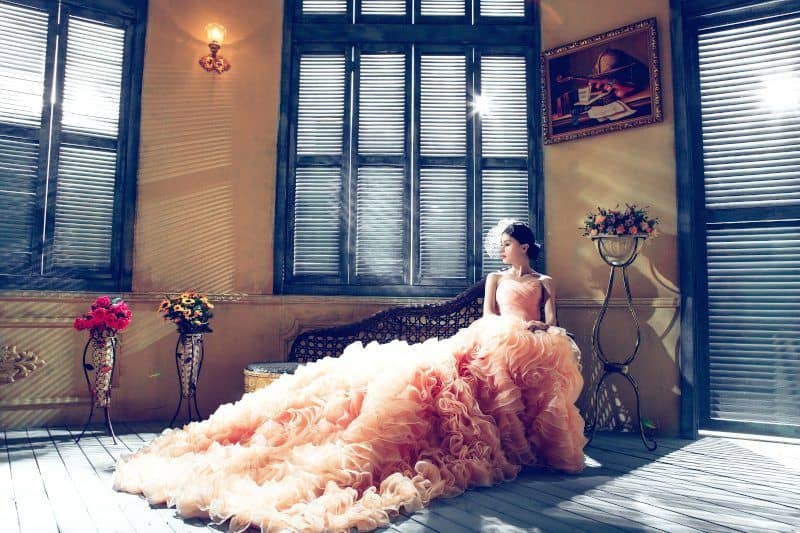A lot has been said about waist training and waist trainers, especially with high profile celebrities openly talking about them in their social media profiles. The fashion influencers have been advocating in favor of waist trainers and waist training for the benefits it brings to the table, the primary one being the instant body transformation into an hourglass shape.

However, it’s not easy to be an ardent follower of waist training. It takes a lot of patience to get used to these tight corsets and cinchers, similar to how it takes time to get going with a proper workout schedule. To emphasize the importance of endurance and continuity, let’s first understand what waist training actually is.
Waist training, essentially, is the process of regularly wearing a waist trainer — a corset or a cincher — in order to reduce the size of your waist and accentuate your bodily curves through the heat compression of these garments on the midsection. While this gives an instant result in the form of a flatter lower abdomen and a petite waistline, to achieve semi-permanent and long-term results it’s important to couple the waist training with a proper workout and a healthy diet.
What Is a Waist Cincher?
A waist cincher is a waist training garment under the category of corsets that compresses the waist and gives the impression of a flat lower abdominal region. While corsets can be of different types and support different parts of the body, waist cinchers are designed particularly to support the waist and thus, are also referred to as compression underwear or shapewear at times.

Not all waist cinchers corsets are extra firm. Some are very light, depending on the kind of material that it’s made of while others have strong compression to absolutely transform the body.
How Do Waist Cinchers Work?
Waist cinchers form a compression area around the midsection that increases the heat and thus causes you to perspire more in that region, an activity that helps the most along with workouts. Waist cinchers, essentially, suck in the waist tight and make it appear a couple of sizes smaller than the original size. They also support the midsection and help you in gaining the right posture.
Choosing the Right Waist Cincher
Before we delve into how to put on a waist cincher, let’s get some clarity about how to choose the right waist cincher in the first place. With so many options available in the market today, it is actually a confusing task for many women to understand each type and then choose the right garment.

It can all seem overwhelming, especially for someone who is just getting into waist training and is buying a waist cincher for the first time.
So, let’s break it down into factors that affect your buying decision and the ones you should keep in mind before checking out your waist cincher.
Finding the Perfect Size
The ease with which you put on a waist cincher becomes a lot more comfortable if you have picked the right-sized waist cincher. Most women live under the impression that they have to force their body to fit into a cincher, however, it’s actually the opposite. If you have to force your body to fit into the waist cincher, you are doing it wrong.

The waist cincher should fit like a glove, basically. It should be effortless to wear them. Of course, they do bring some discomfort in the beginning since your waist is getting used to the compression, but the fitting should never be a problem.
In this step, it’s vital to be honest with yourself and not consider a size lower than what you actually are, as most people tend to do to fit into smaller clothes. The obvious measurement here is the waist, which you should measure accurately before going to buy a waist cincher.
Measure the narrowest area of the waist, which is just above the navel. If you are using a measuring tape, make sure that you leave one finger space between the tape and the body to not make it extremely tight.
How to Put on a Waist Cincher
You have accurately figured out what type of waist cincher your body needs and have measured the right size as well. Now comes the most important part, which is knowing how to put on a waist cincher.
For first-timers, it can be a little difficult to put on one since it might feel extremely tight and the body may feel compressed under it, giving you immediate discomfort. However, a waist cincher should never have to be deliberately yanked upon to fit.
To put on a waist cincher, begin by clasping the hooks in the front area. These are usually at the bottom of the garment and offer the best results when tightened around the narrowest portion of the waist. Then, once the front hooks are clasped tightly, you pull down the waist cincher to your abdomen.
When you are first starting with a waist cincher for the purpose of waist training, the garment should fit the best at its loosest hooks so that there is a scope of tightening it as you go.
The reason to not wear them at their tightest initially is that all new cinchers and shapewear need to be broken in before you can get comfortable wearing them. Therefore, it isn’t advisable to wear a cincher or any other waist trainer for longer hours in the beginning. Wear it for a couple of hours a day and then move up the hours gradually.

Here is a quick guide to remember while putting on a waist cincher.
Resources:
BT Group
Marie Claire
The Kewl Shop
